Australian Tropical Rainforest Plants - Online edition
Cissus adnata Roxb.
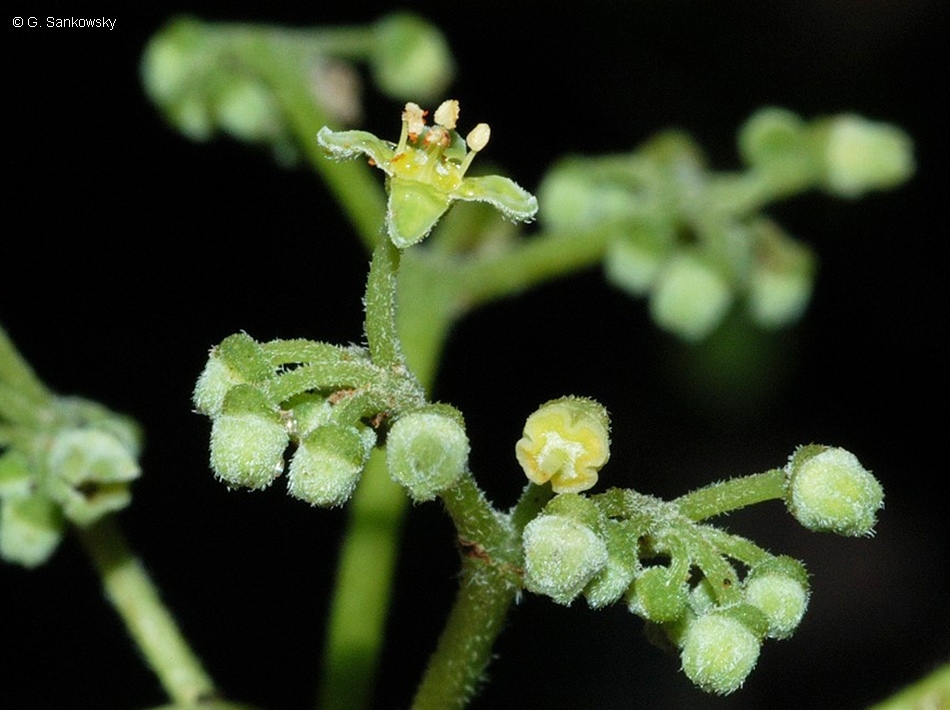

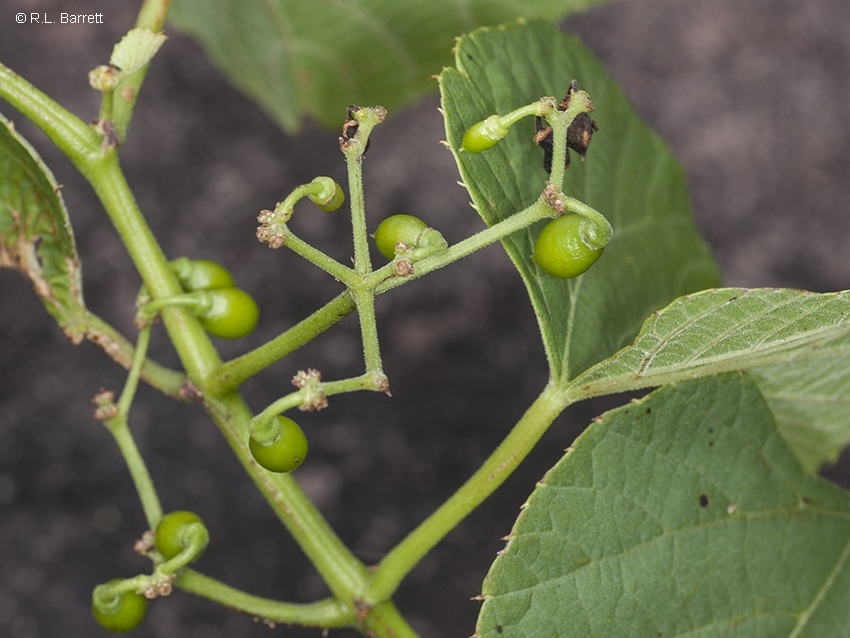

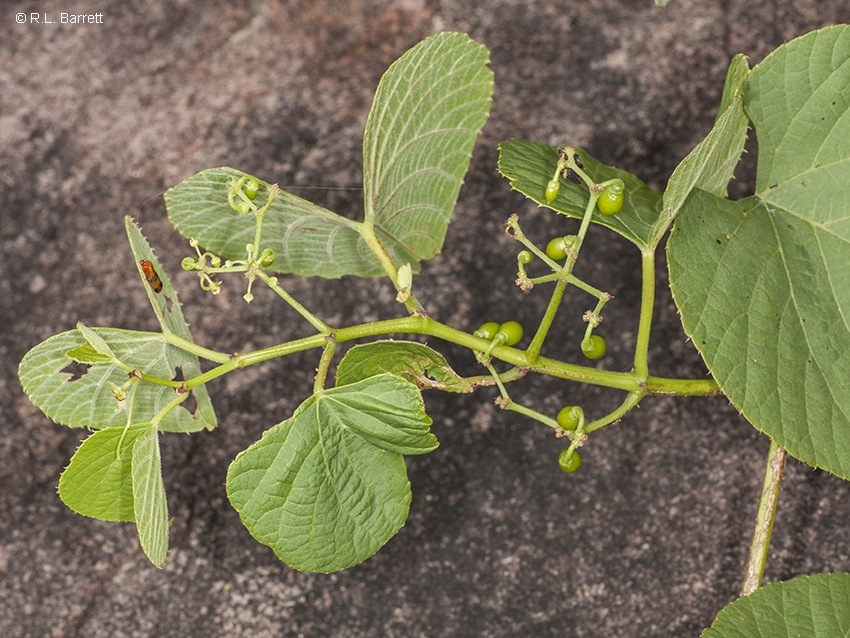
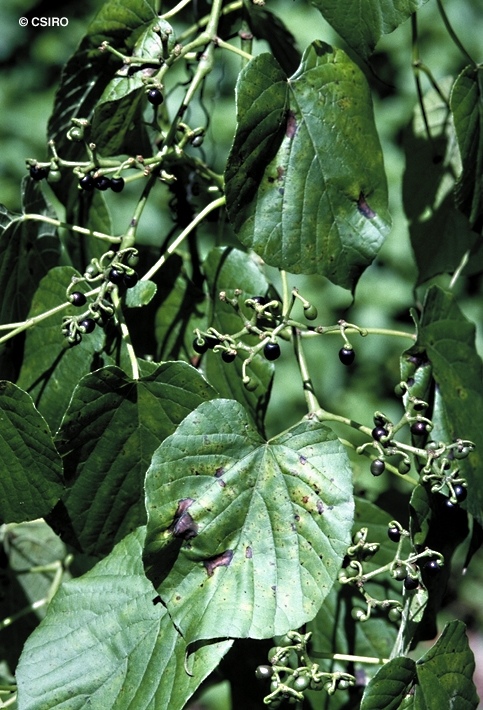
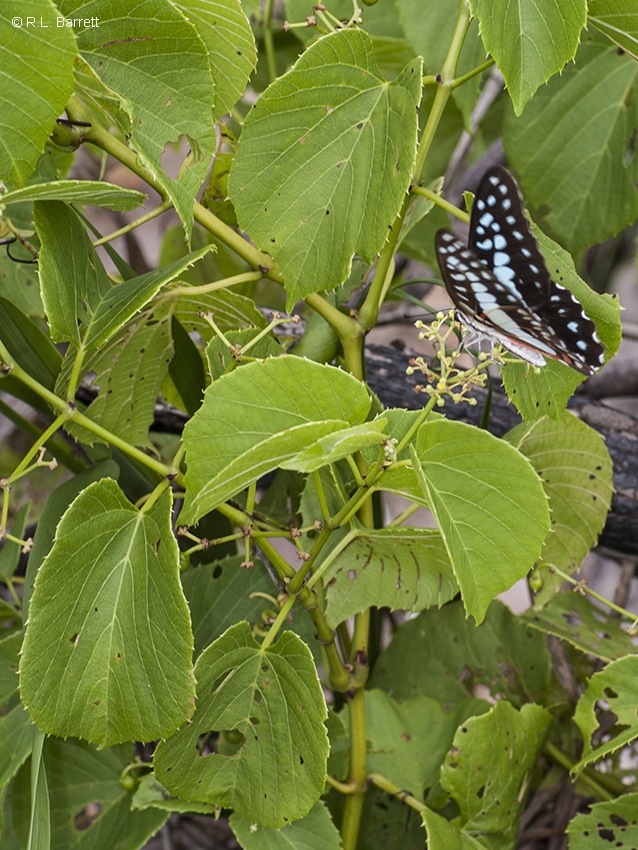



Roxburgh, W. in Carey, W. (ed.) (1820) Flora Indica 1: 423. Type: Wall. Cat. No. 5998 (1931-32) based on No. 5998 c, d, f, g (K-Wall.).
Grape, Heart-leaved; Heart-leaves Grape; Endeavour River Vine; Vine, Endeavour River
Vine stem diameters to 9 cm recorded. White granular and pink fibrous stripes visible in the blaze. Stems soft, easy to cut with a knife. Dead bark layered showing growth rings in transverse sections.
Leaf blades about 6.5-19 x 5.5-19 cm, petioles about 2.5-12 cm long. Underside of the leaf blade clothed in short pale-coloured crisped hairs. Teeth about 30-35 on each side of the leaf blade. Each marginal tooth ending in an aristate tip. Lateral veins prominent on the underside of the leaf blade and extending to the blade margin. Stipules hairy, about 2-4 mm long, rounded at the apex. Tendrils simple (unbranched) leaf-opposed. Twigs pithy, oak grain visible in the larger twigs.
Inflorescence leaf-opposed. Flowers about 3 mm diam. Calyx cup-like, lobes very short, difficult to discern. Petals about 1.5-1.9 mm long, outer surface densely clothed in hairs. Stamens about 1.8 mm long. Summit of the ovary densely clothed in hairs. Disk raised, crenate, yellow. Ovules 2 per locule.
Cotyledons +/- orbicular, about 22-24 x 25 mm. Hypocotyl nil. First leaves cordate to reniform, margins coarsely toothed with 1-4 teeth on each side. Leaf blades 3-veined at the base, glabrous on the upper surface, minutely but sparsely clothed in hairs on the lower surface. Taproot thick, somewhat carrot-like (Daucus carota). At the tenth leaf stage: leaf blade cordate, apex acuminate. Teeth fine, peg-like looking like extensions of the lateral veins. Midrib raised on the upper surface of the leaf blade. Stipules papery, about 2.5 x 2 mm. Leaf stems glabrous, older stems thickened, corky and with prominent longitudinal lenticels. Seed germination time 60 to 209 days.
This species may have medicinal properties.
This species has been used medicinally in India. Cribb (1981).





